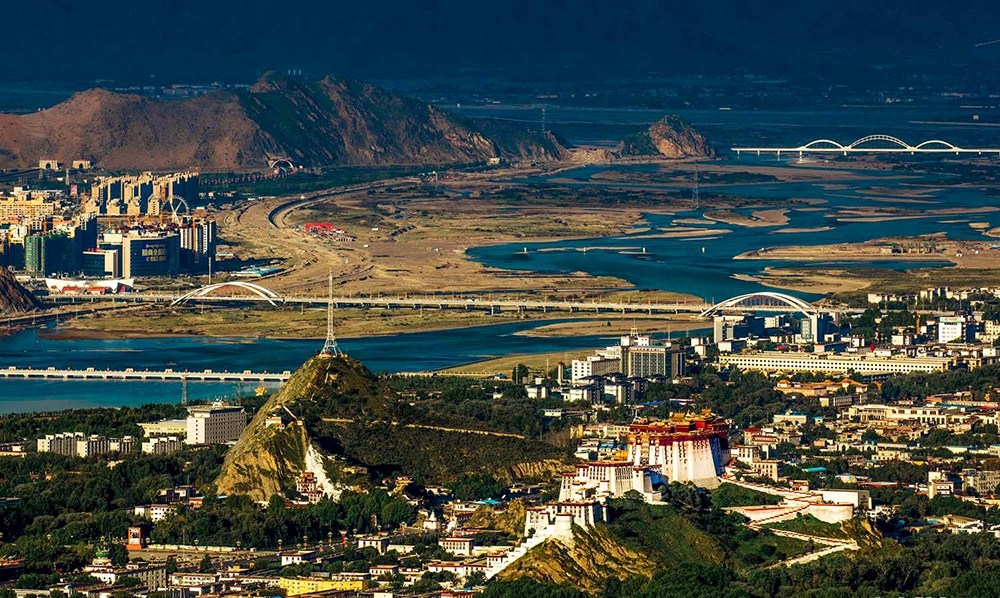From mud hut to modern home: four houses of a Tibetan herdsman
To understand the effects of China's ambitious poverty alleviation efforts, you might want to talk to Tibetan herdsman Ngoizhub Gyaco and visit his family's four generations of houses in one of the most inaccessible places on the Qinghai-Tibet Plateau.
Precariously hugging the cliff on one of the many mountains standing between the locals and the wider world, the cluster of houses, home to Gyaco and his neighbors, is a juxtaposition between the old and the new. 69-year-old Gyaco and his family have lived in the Tibetan village of Qusum their entire lives.
Now an abandoned mud hut, Gyaco's first home, like other nearby mud houses situated on the lower level of the cliff, was built before Tibet's peaceful liberation in 1951.
He still remembers his whole family sleeping next to each other on the floor in a tiny room. "There wasn't even space for a bed," said Gyaco. The doorway is less than 1.5 meters high, so "we had to stoop to get in and out, and it was always pitch black because there were no windows or electricity."
Gyaco recalled that having a decent house of their own had been his family's dream for years.
Next to his mud hut were other mud and brick houses. Gyaco's second home was one of them. Built in the 1980s, they were already completely derelict.
Gyaco is especially fond of his third home, a brick and stone house built in 2012 as part of an affordable housing project. Seven years ago, with a subsidy of 13,000 yuan (about 1,921 U.S. dollars), Gyaco was so excited that he traveled two days to the nearest city to gather construction materials and workers. "I put a lot of efforts into designing that house," said Gyaco.
The roads linking Qusum to other parts of Tibet are blocked with snow half the year. When the weather turns warm, Gyaco and his neighbors must scale mountain peaks that tower 5,000 meters above sea level to reach Zadan, the closest county seat.
Unfortunately, due to severe flood damage, his lovingly designed home, and many other similar houses in the neighborhood, are no longer inhabitable.
Now, Gyaco's family lives in a concrete Tibetan-style house, complete with a courtyard, as do the other villagers of Qusum. The modern structures were built in 2016 as part of a government drive to develop "well-off border villages."
Looking back at the three new houses that his family built over the past decades, Gyaco said with a smile, "each is better than the previous one."
Through continuing local government projects, 460,300 affordable houses have been built in Tibet Autonomous Region since 2006, and 147,000 dilapidated houses had been renovated by the end of 2017.
In 2017, the per capita disposable income in Qulusumgyi Township reached 8,743 yuan (about 1,293 U.S. dollars), and it is expected that the area will soon be lifted out of poverty.
With the internet and electricity already in place, the local government has outlined plans to install tap water and build a new road as soon as winter ends.
Stories

Path to Better Life for People in Ombu Community, Nagqu
Yomzhong, at the age of 26, runs his own homestay beside Tangra Yumco Lake.







